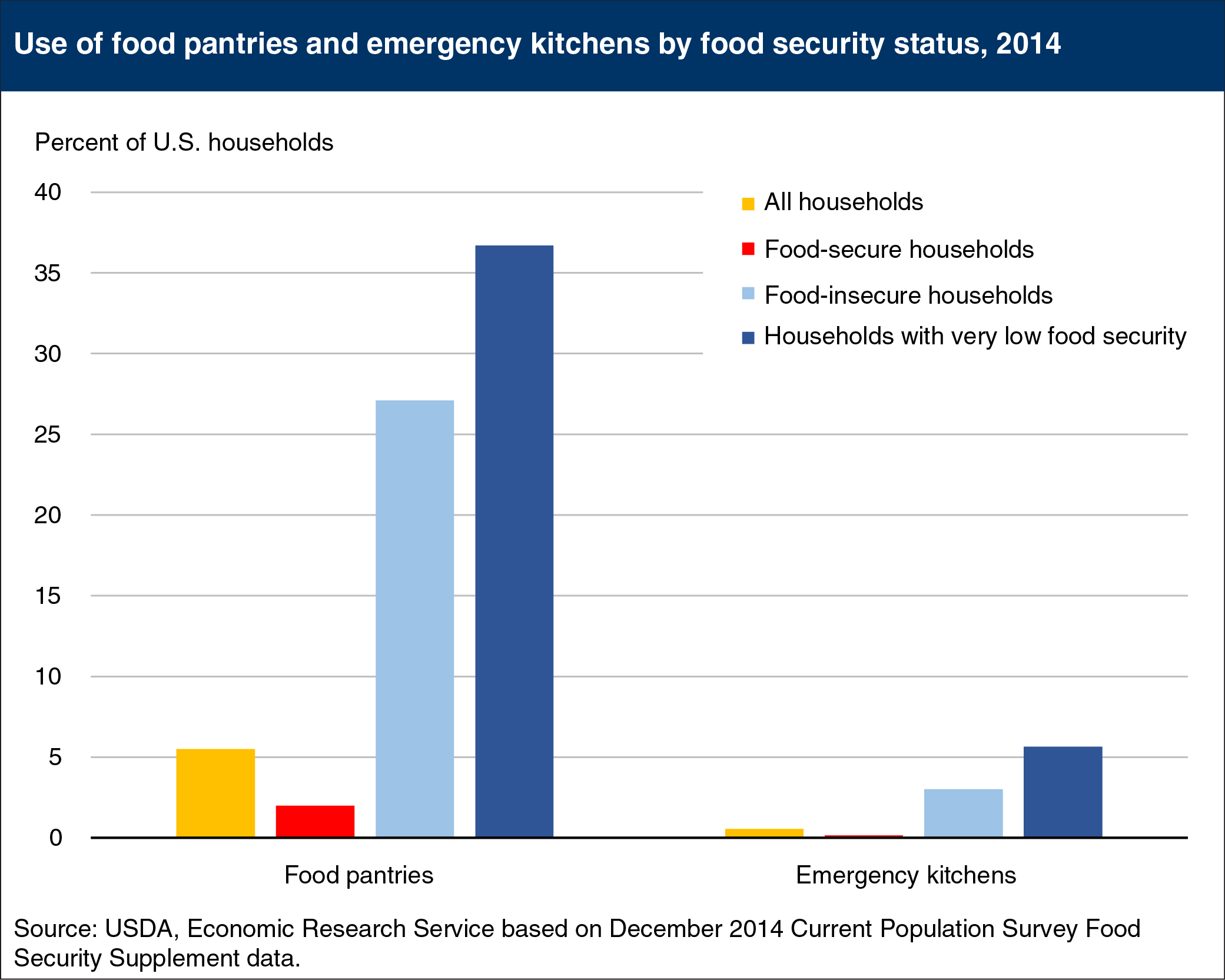One in four food-insecure households visited food pantries in 2014
- by Matthew P. Rabbitt and Alisha Coleman-Jensen
- 11/17/2015

Fourteen percent of U.S. households (17.4 million households) were food insecure in 2014, meaning that at some time during the year, these households were unable to acquire adequate food for one or more household members due to a lack of resources. For a subset of food-insecure households—households with very low food security—food intake of one or more members was reduced and normal eating patterns were disrupted. Households having trouble putting food on the table may rely on emergency food providers, such as food pantries and emergency kitchens. Food pantries distribute unprepared foods for offsite use. Emergency kitchens (sometimes referred to as soup kitchens) provide individuals with prepared food to eat at the site. In 2014, 5.5 percent of all U.S. households acquired emergency food from a food pantry, and less than 1.0 percent obtained meals from emergency kitchens. Food-insecure households were more likely to use these assistance options; more than one in four food-insecure households (27.1 percent) used food pantries in 2014, while 3.0 percent used emergency kitchens. An estimated 36.7 percent of households with very low food security visited food pantries, and 5.7 percent visited an emergency kitchen. The statistics for this chart are from Statistical Supplement to Household Food Security in the United States in 2014, September 2015.

